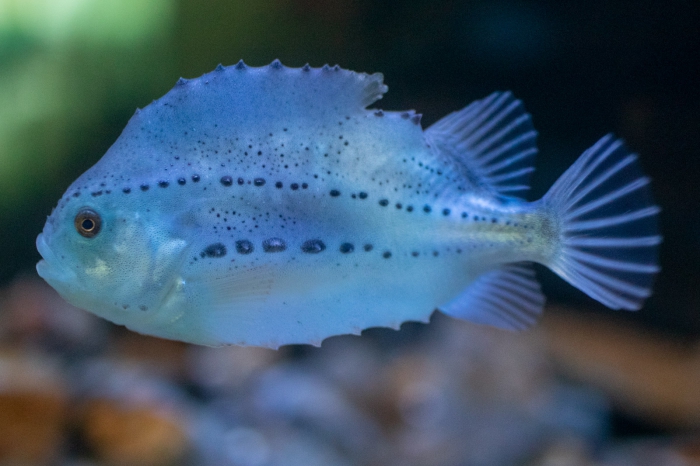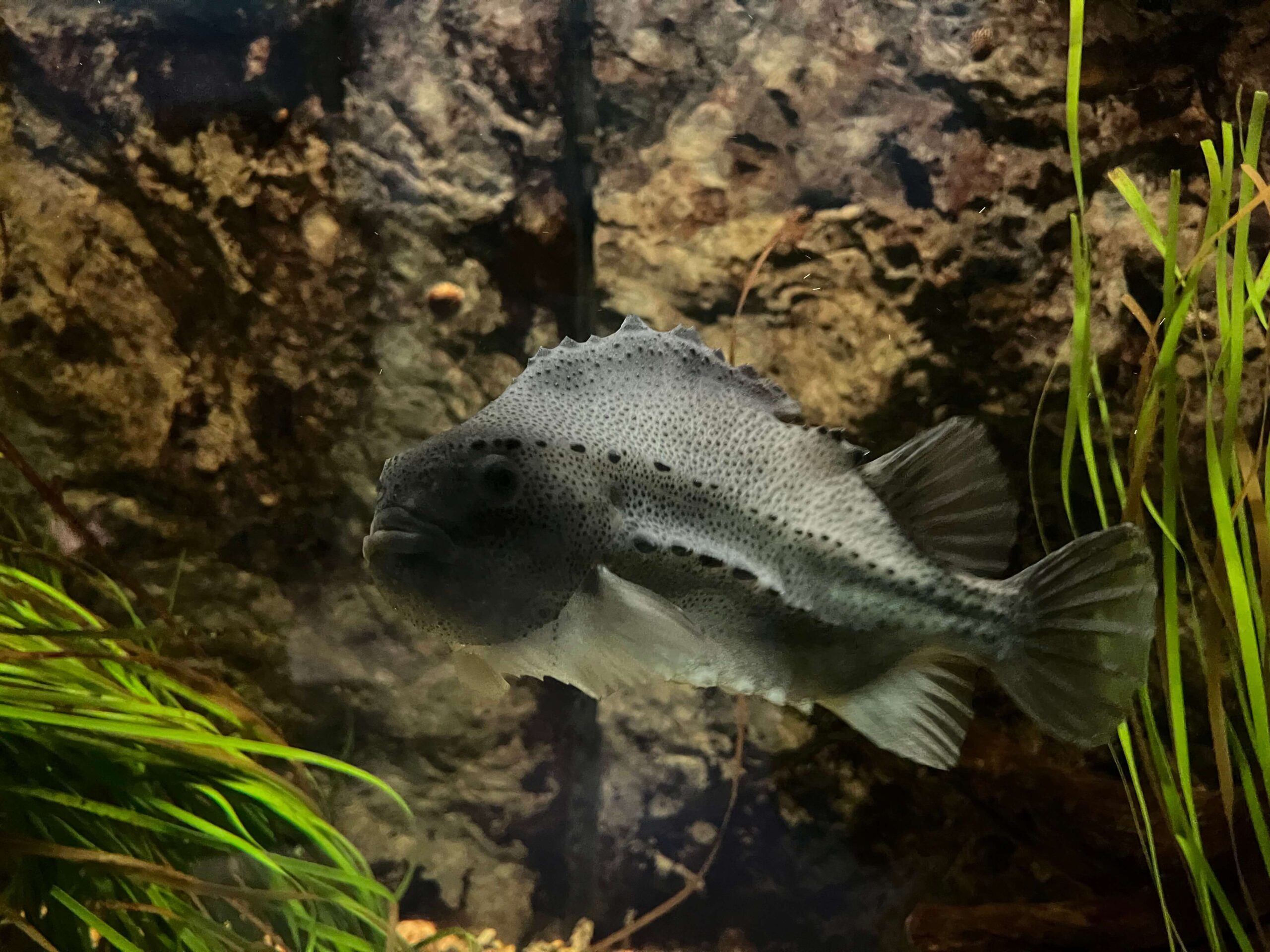
SIZE:
40 cm to 50 cm, up to 60 cm.
LIFE EXPECTANCY:
Up to 13 years.
LIFE CYCLE:
Sexual maturity is reached around 5 or 6 years of age.
Spawning takes place in May and June in the Gulf of St. Lawrence. Adults migrate to shallow coastal waters.
Males take part in an arduous nuptial procession to defend their territory and conquer their mate.
The female lays a mass of over 140,000 eggs. This spongy, sticky mass attaches itself to stones among the algae.
Once it has laid its eggs, the female returns to deeper waters. Incubation lasts from one and a half to two months. The male defends and fans its eggs. To aerate them, it stretches the mass of eggs by inserting its head to circulate water with jaw movements.

Lumpfish can vary in colour: from grey to blue and even red for males when breeding.
Credit: Claude Nozères, photo taken in 2019 at the Maurice Lamontagne Institute.
The lumpfish has a stocky body. Its rough, thick, scale-less skin is dotted with warty growths. Its mouth has a row of small, simple teeth. The hump on its back is half cartilaginous, half gelatinous.
This species of fish has a pair of large fins just behind its head and a slightly rounded tail. One of its special features is the large suction disk on its belly, which allows it to attach to hard surfaces.
Its colour varies according to its environment. It can range from blue to grey-brown. Its lighter belly is yellowish or whitish. Males turn red during the reproduction period.
Near the bottom, between 50 and 150 m depth
Lumpfish can withstand temperatures between 1 and 11 °C. They can occasionally withstand temperatures up to 20 °C for less than 24 hours. They prefer rocky areas with abundant vegetation for hiding.
PREYS:
Molluscs
Worms
Jellyfish
Small crustaceans
Echinoderms
Small herring
Sand lances
PREDATORS:
Grey seals
Greenland sharks
Belugas
Northern gannets
MACHINES:
Gillnets.
REGULATIONS:
- Restricted season and fishing zones
- Regulated mesh size to avoid catching undersized individuals
The number of large lumpfish catches and fishermen has greatly decreased since 1986.
This fish is mostly caught for its eggs, known as “lumpfish eggs” or “fake caviar.”
BENEFITS:
Eggs of the large lumpfish are rich in vitamins A, B12 and D, as well as sodium, iodine and phosphorus.
LET’S COOK:
It is not the flesh of the lumpfish that is eaten but rather its crunchy and slightly iodine-tasting eggs. They are coloured red to make them more appetizing or black to look more like caviar.
OUR CULINARY ADVICE:
- Given its threatened status and because its eggs may contain colouring agents, we do not recommend consuming products from lumpfish.





